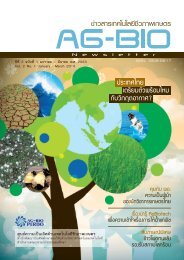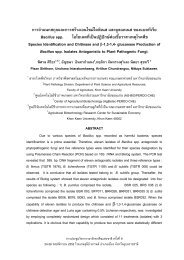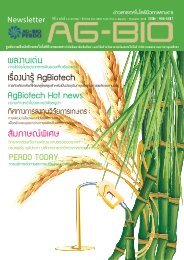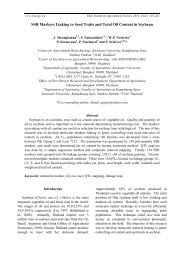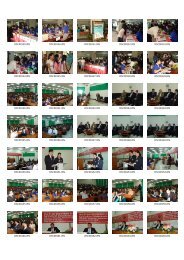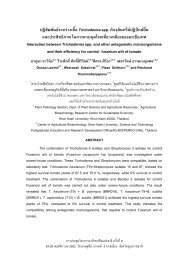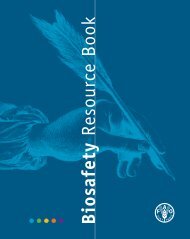Biosafety Manual PDF - Lawrence Berkeley National Laboratory
Biosafety Manual PDF - Lawrence Berkeley National Laboratory
Biosafety Manual PDF - Lawrence Berkeley National Laboratory
Create successful ePaper yourself
Turn your PDF publications into a flip-book with our unique Google optimized e-Paper software.
<strong>Biosafety</strong> <strong>Manual</strong><br />
IBC-approved version (May 18, 2010)<br />
• The term greenhouse refers to a structure with walls, a roof, and a floor designed and<br />
used principally for growing plants in a controlled and protected environment. The walls<br />
and roof are usually constructed of transparent or translucent material to allow the<br />
passage of sunlight for plant growth. The term greenhouse facility includes the actual<br />
greenhouse rooms or compartments for growing plants, including all immediately<br />
contiguous hallways and head-house areas, and is considered part of the confinement<br />
area.<br />
• The plants covered in Appendix P of the NIH Guidelines include but are not limited to<br />
mosses, liverworts, macroscopic algae, and vascular plants including terrestrial crops,<br />
forest, and ornamental species.<br />
• Plant-associated microorganisms include viroids, virusoids, viruses, bacteria, fungi,<br />
protozoans, certain small algae, and microorganisms that have a benign or beneficial<br />
association with plants, such as certain Rhizobium species and microorganisms known<br />
to cause plant diseases. Microorganisms being modified to foster an association with<br />
plants are also included.<br />
• Plant-associated small animals include those arthropods that have an obligate<br />
association with plants, are plant pests or plant pollinators, or transmit plant disease<br />
agents. They also include other small animals such as nematodes that require the use of<br />
plants to test their biological properties. Microorganisms associated with such small<br />
animals (e.g., pathogens or symbionts) are also included.<br />
A Practical Guide to Containment developed by Virginia Polytechnic and State University is a<br />
good example of how to apply plant BLs in research with greenhouse transgenic plants and<br />
microbes.<br />
4.4.2.3 Vertebrate Animal Containment Levels<br />
<strong>Biosafety</strong> containment levels and criteria for the use or care of vertebrate animals must be<br />
selected or developed following the risk assessment and covered in the <strong>Biosafety</strong> Work<br />
Authorization. <strong>Laboratory</strong> or animal biosafety containment levels must be applied to the work as<br />
follows:<br />
• <strong>Laboratory</strong> biosafety level criteria should be used for laboratory animals<br />
such as rodents whose size or growth requirements allow the use of<br />
laboratory containment levels specified by the NIH Guidelines. <strong>Laboratory</strong><br />
BLs and criteria are discussed in Section 4.4.1 of this manual.<br />
• Animal biosafety levels must be applied when 1) recombinant research<br />
involves larger animals (e.g., nonhuman primates), 2) animals are infected<br />
with human pathogens, or 3) animals may harbor zoonotic agents (see<br />
Table 9 for more information). Acronyms for animal biosafety levels are<br />
BL1-N through BL4-N. In some cases, animal use, animal care, and<br />
hazards at LBNL may not be directly applicable to these established animal biosafety<br />
levels and criteria. In these cases, specific criteria that may be applicable may be<br />
selected, customized, and incorporated into the <strong>Biosafety</strong> Work Authorization.<br />
Agent summary statements for zoonotic agents in Section VIII of BMBL also recommend<br />
containment levels for laboratory use of zoonotic agents, and for handling animals infected with<br />
the agent.<br />
Printed copies are not official versions of this manual. Before using the printed copy, verify that it is the most current version.<br />
38



